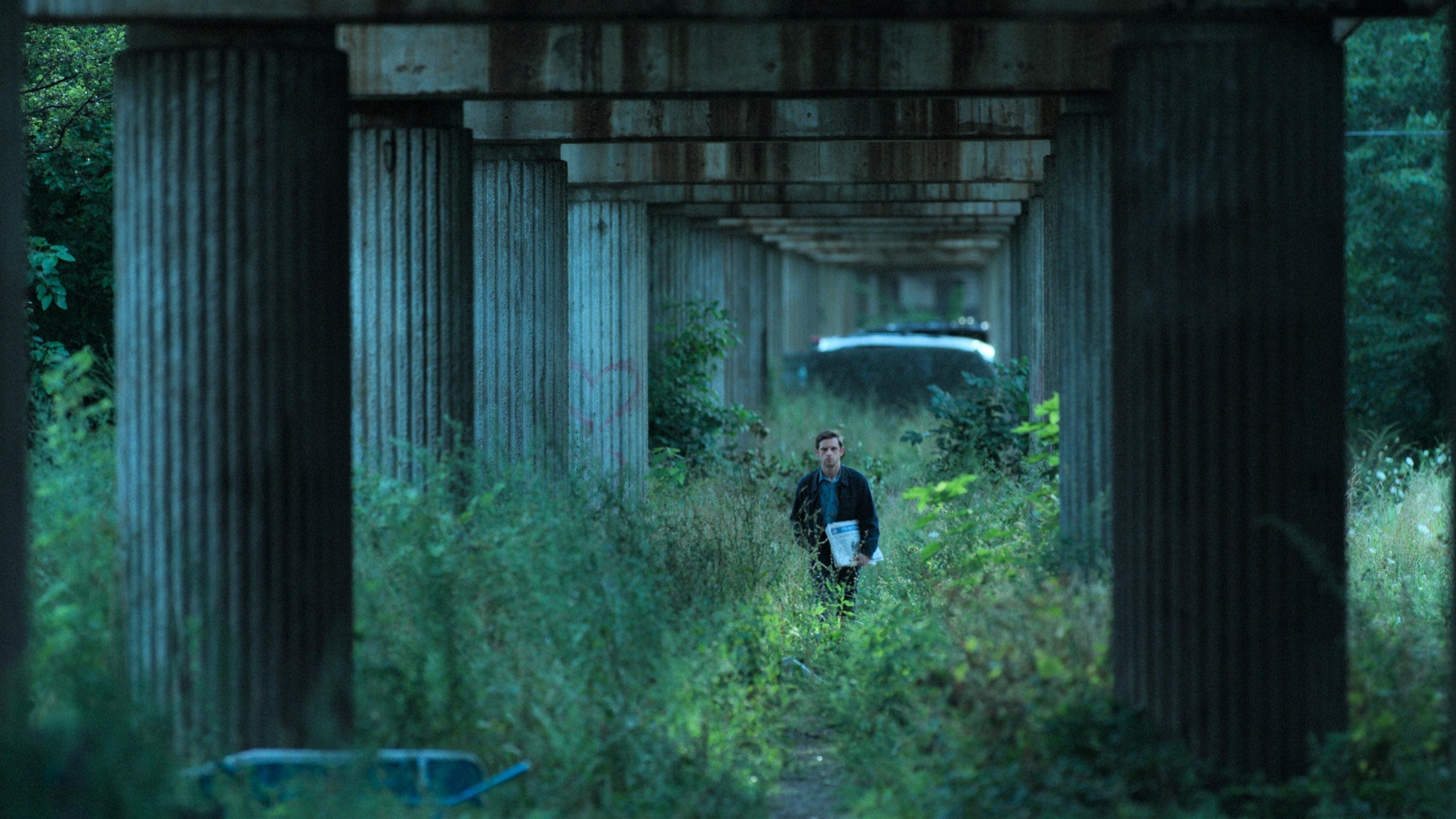In Shining Girls, Elisabeth Moss time-travels to track her would-be killer
This supernatural thriller from Apple TV+ unfolds like Zodiac on Xanax

Who’s menacing Elisabeth Moss this time? The screen actor’s frequently besieged characters have withstood 1960s corporate sexism, theofascist patriarchy, even a freakin’ invisible, abusive ex. Moss’s latest project (as star, director, and co-executive producer) aims to leave those sufferings in the dust. In the eight-part Apple TV+ Shining Girls, she plays Kirby Mazrachi, a survivor hunting down a serial killer who jumps through time. All-American woman-hater Harper (Jamie Bell) is now, then, every-when. He makes recordings from the future and plays them back to victims over the phone for sick laughs. Making things worse, but perhaps also protecting her, is the fact that Kirby keeps sliding uncontrollably into alternate realities. Warning for crime junkies: The catch-a-killer thrills get watered down in metaphysical gimmickry.
Based on Lauren Beukes’ 2013 best-selling novel, the conceit layers newspaper procedural, sci fi, and trauma drama, with clues scattered and juggled to keep us guessing over six and a half hours. Our baseline setting is Chicago, 1992, where Kirby lives with her rock-musician mother (Amy Brenneman) and a cat named Grendel in a modest two-bedroom. Kirby toils in the basement archives at the Chicago Sun-Times, collecting and distributing clips and research to reporters in the bullpen. As she weaves her file cart among desks, Walkman clamped to her ears, Kirby looks glum, guarded, almost paranoid. When she learns that crime reporter Dan Velazquez (Wagner Moura) is investigating the murder of Julia Madrigal—her mutilated body was found stuffed in a water pipe—Kirby knows her mission. “With Julia there’s eight of us. They’re all the same as me. I just got to live through it,” Kirby says.
Years ago, Kirby survived a horrific assault at night. The attacker made deep cuts on her abdomen that formed a cross, and a matchbook was stuck inside the cavity. The matchbook was from a bar that no longer exists. Kirby had been walking her dog on the beach at the time, and she never saw her assailant. But she did hear his voice. She hears it again when she listens to tapes of creepy phone calls received by the latest victim, Julia Madrigal.
The voice belongs to Harper, a mysterious stranger who appears in the first scene of the first episode, having a politely creepy chat with a young girl on her stoop (who grows up to be Kirby), circa 1964. The girl has built a toy circus out of found objects like wheels and wire. After catching a bee, plucking off its wings and leaving it on a step, Harper hands the creeped-out kid a plastic Pegasus to add to her carnival. “A filly doesn’t attract a big crowd,” he murmurs, “but they’re easier to break.” In the fourth episode, “Attribution,” Kirby comes to the terrifying realization that the man she met decades ago is now facing her at night in a deserted laundromat—and he hasn’t aged. For his part, Harper is enraged that Kirby’s hair style has changed. After a bloody struggle between them, Harper realizes that Kirby can jump time like him. Cat and mouse just got fractal.
For Kirby (who adopted the name after her attack), the reality flips may be her only defense against being tracked down by Harper, who learns that she survived her attack through an encounter with the drunken Dan. (He’s a newspaperman; he has demons.) But they also bring on intense existential crises. Showrunner Silka Luisa also turns them into a deft metaphor for trauma and recovery, how violence can permanently derail one’s sense of self and time. “Everything is like always, and then it’s not,” Kirby tells her mother. “Nothing is where it should be, and I don’t recognize it anymore.” A cat named Grendel becomes a dog named Grendel. Kirby works at one desk in the morning, then is told her desk has always been across the room. A medical examiner morphs from a woman to a man. By the end of the first episode, her apartment has moved one floor above; her mother is gone; and she’s married to the photographer Marcus (Chris Chalk, magnetic).
Shining Girls unfolds slowly, like Zodiac on Xanax, which could be a hypnotic vibe to some, or an enervating one to others. In order to keep us hooked, especially after the ground rules are established in the first four episodes, the show’s writers and directors parcel out details. For instance, a red umbrella discovered by Jin-Sook Gwansun (a commanding Phillipa Soo) on the roof of the Adler Planetarium recurs in a later episode when she purchases it on the street, then hangs it up at work and then… no doubt, it’s stolen by Harper. Such chronological and reality sleights of hand are initially creepy, but they grow confusing and tedious as the series goes on. In some corner of the multiverse, the material has more impact as a movie.
Time slippage and multiverse hopping are great (see Everything Everywhere All At Once), but baked into a grisly, semi-realistic narrative, the device can seem like a heady cop-out. For a viewer, the challenge is to figure out world rules. If Harper possesses god-like knowledge of what has or will happen, how can he possibly be tricked or caught? What exactly is the magic house that allows Harper to time travel, and which Kirby must ultimately face? The elevator pitch—Mindhunter + Spotlight + Stephen King!—is also, ultimately, the drawback. Not since David Fincher’s FBI profiling series has a show captured the mix of detective work and gut-churning, mounting tension as this. And the period details are downright cute: Microfiche! Mini-cassette tapes! Answering machines! But ultimately, Shining Girls sacrifices psychological depth for quantum flash.